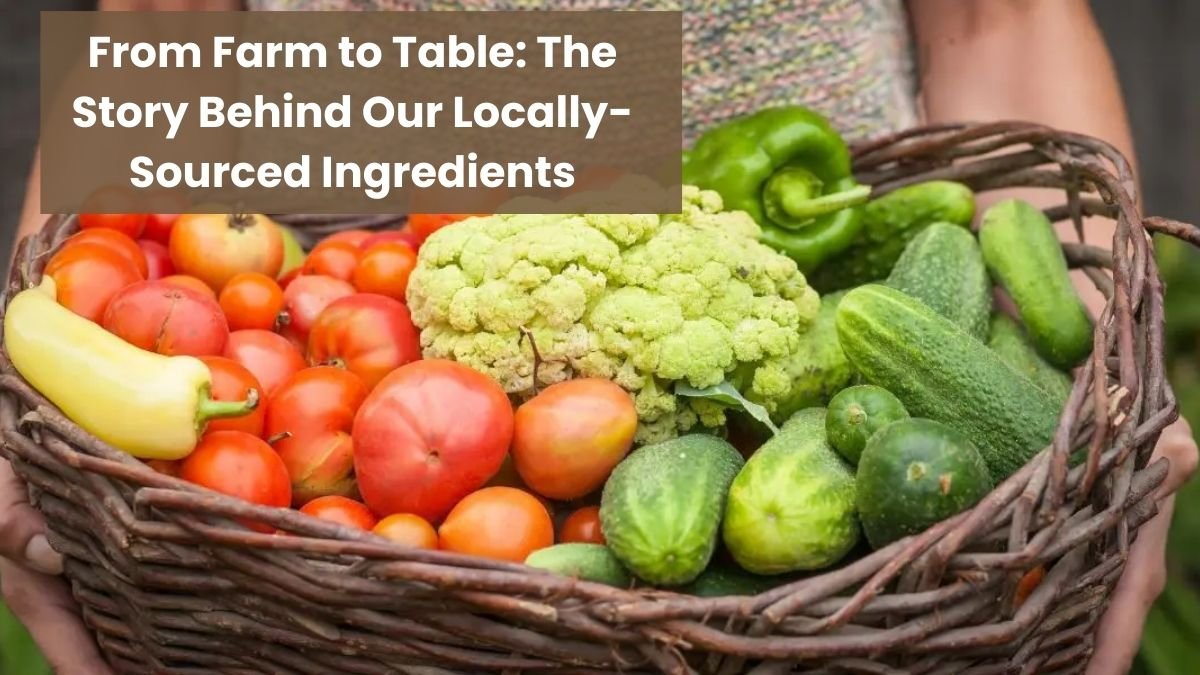From Farm to Table: The Story Behind Our Locally-Sourced Ingredients When we see hot rotis, fresh vegetables or aromatic rice on our plate, we rarely think about how much hard work, dedication and commitment has gone into bringing these food items to us. Behind every grain, every fruit, every vegetable is the story of a farmer – who rises with the sun, builds a relationship with the soil and fills our plate with his sweat.
Today we are in an era where the importance of eating “local” is being re-evaluated. This journey from ‘farm to table’ is not only a guarantee of healthy food, but it is also a way to honor the hard work of our farmers.
What is the idea of ‘Farm to Table’?
‘Farm to Table’ is a concept in which food items are delivered directly from the farmer to the consumer, without any middlemen, long storage process or chemical preservation. This idea talks about adopting a simple, transparent and reliable path, away from the complexities of the modern food chain.
When we buy food from a local source, we are not only getting fresh food but also strengthening the local economy, environment and society.
The role of local farmers: The real heroes of the plate
Most of the farmers in India are small and medium farmers who cultivate with limited resources. But with their hard work and skill, they give us what we need most every season – food.
The daily consumption requirement of us is also involved with grains and vegetables such as potatoes, tomatoes, coriander, radish, millet, rice, which are grown in the fields around us. On purchasing in the local mandi or in any farmers market, you not only get the fresh product but also have a direct contribution to a farmers income.
Why is local produce better?
Newer and healthier
The method allows locally produced vegetables and fruits to get to the marketplace as soon as it has been pulled out of the ground. This saves the nutrients contained within them in addition to enriching the taste of the food.
Naturally grown crops Many local farmers still practice traditional and organic farming methods. These products use minimal chemical fertilizers and pesticides.
Environmentally friendly When the food is distant, it must be transported through trucks, containers or aircraft which aggravates pollution. Shopping locally saves on fuel and on carbon emission.
Direct economic benefits to farmers When farmers receive direct benefits without middlemen, their hard work pays off, allowing them to produce more produce.
The journey of our plate: Through the eyes of a farmer
Consider a farmer named Ramu will wake up as early as 5 a.m. in the morning and take the soil in his hand and move to the ridge of his field to see how wet it is. On the stove, his mother is preparing tea and the son is preparing to go to school.
Ramu works hard in his field, doing every process from sowing to harvesting with his own hands. He knows that this crop will provide nutrition to a family’s plate. His hard work pays off when his produce is sold directly at the Kisan Haat, and he gets appreciation from the customer.
‘Farm to Table’ initiative in hotels and restaurants
Now restaurants and hotels in many cities are adopting a model where they buy vegetables, fruits, spices and milk directly from the farmers. This gives them high quality raw material and the customer gets pure and tasty food. This is also increasing the income of the farmers in a sustainable way.
How to support local produce?
Shop from local markets Shop from the nearby vegetable market or farmers market, even if it is only once a week. This will ensure that your purchase money goes into the right hands.
Give preference to ‘farm fresh’ products
Find shops that sell produce directly from the fields. This not only guarantees quality but also supports local farmers.
Eat seasonal produce
Eat fruits and vegetables that grow in the season. Not only does this provide natural balance to the body, but the produce from the farms also gets sold quickly.
Spread awareness in schools and among children
It is important to teach children that the value of food is not just in money, but in hard work, time and respect.
Conclusion
Every time you eat, that plate does not just have taste – it has the dream of a farmer, the love of a mother, and the power of our earth. ‘Farm to Table’ is not a new fashion, but our tradition, which we have to adopt again. This is a small but effective step towards food security, farmer welfare and environmental balance. Next time you go to the market, think once – did I know the story related to my food today
